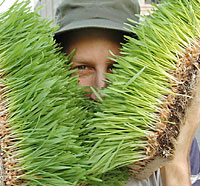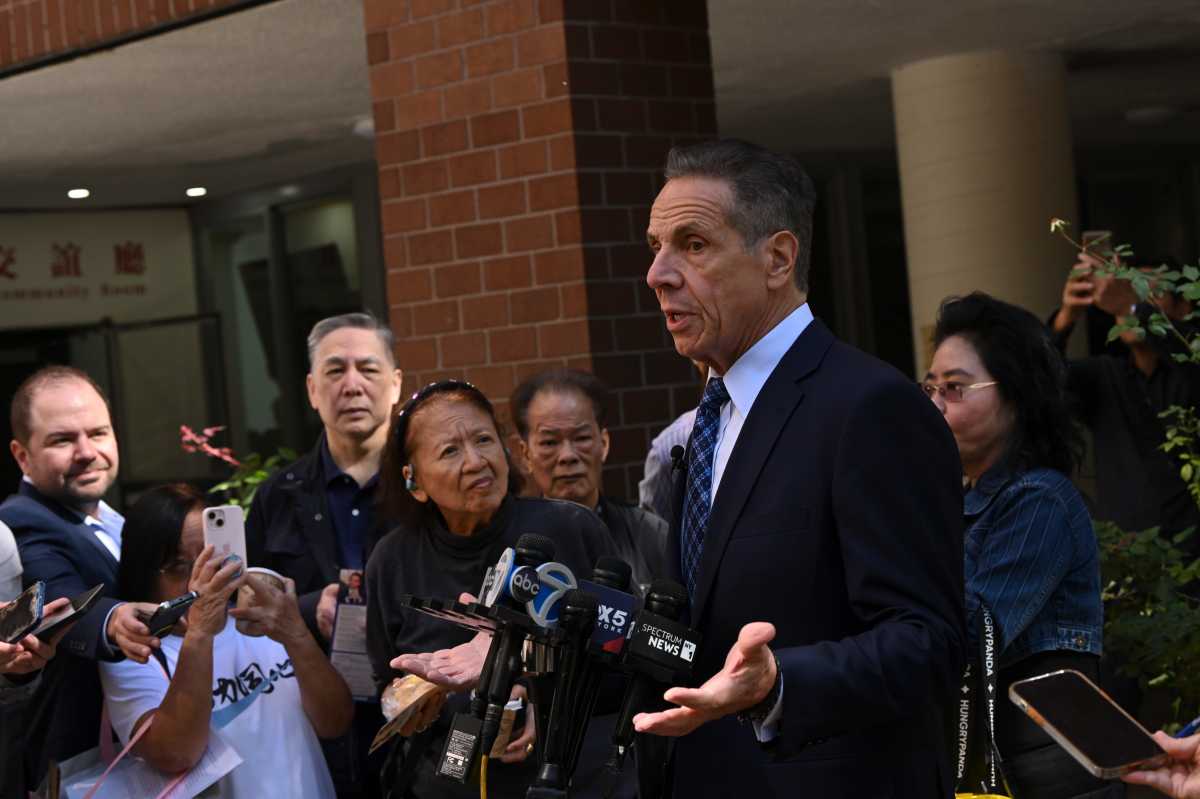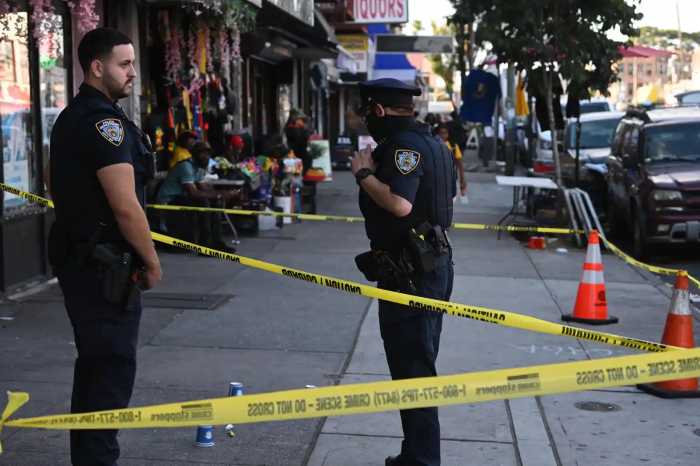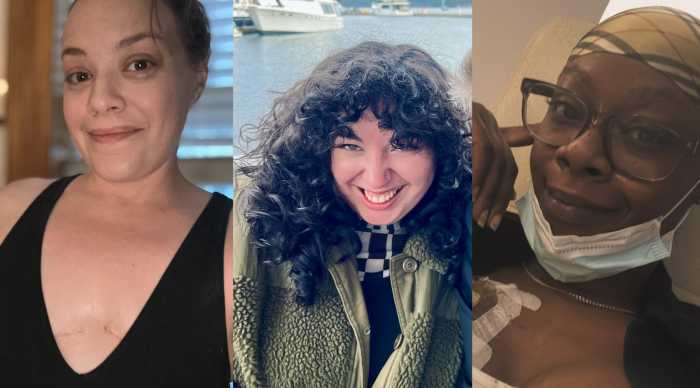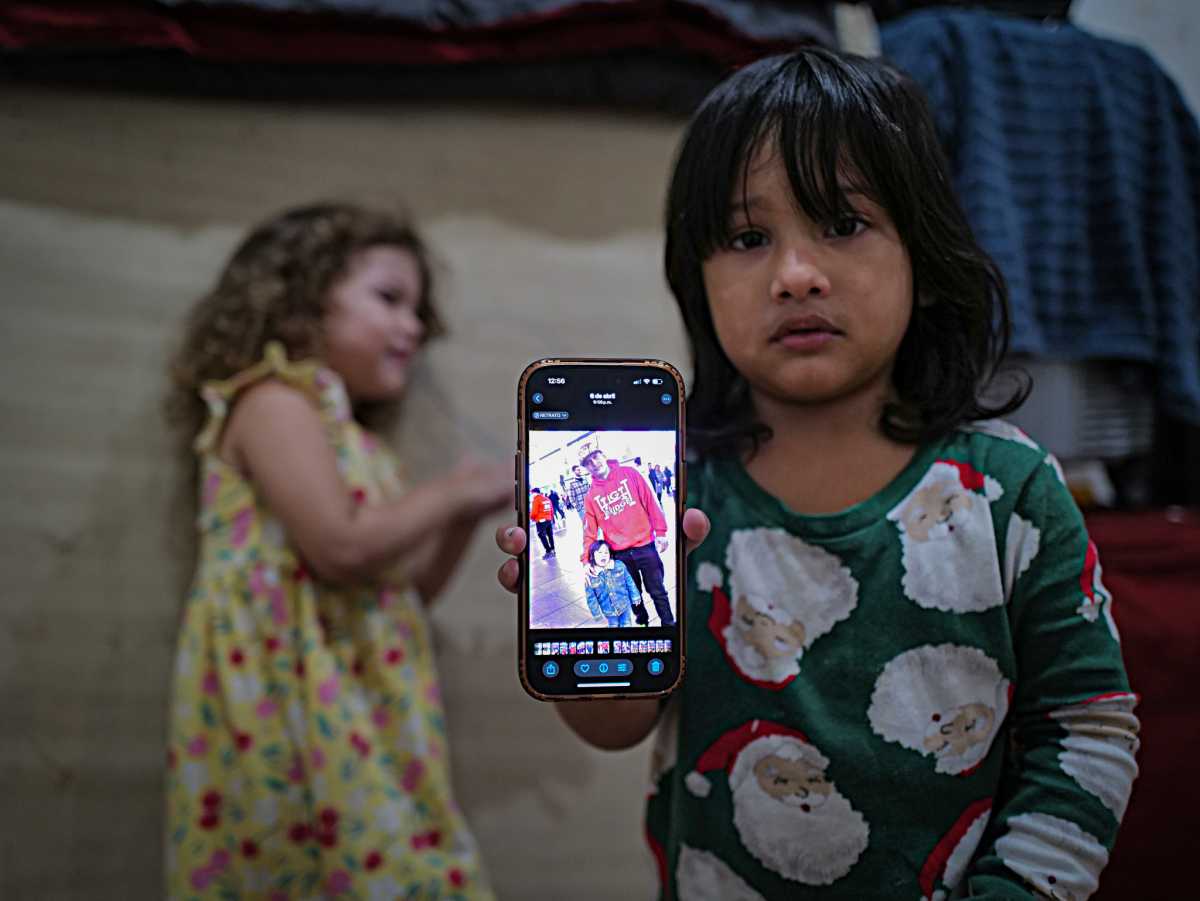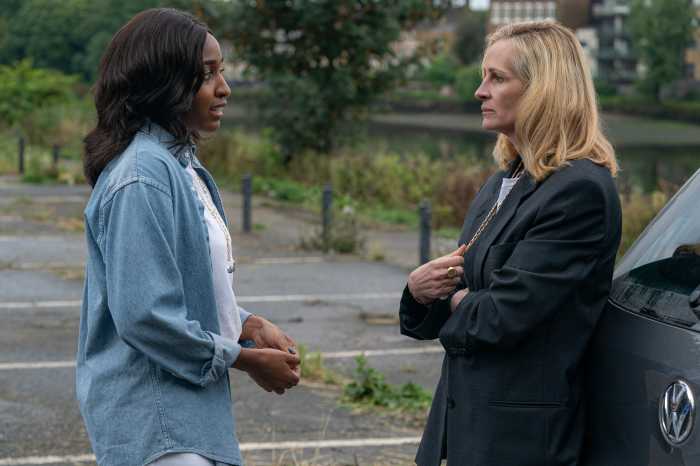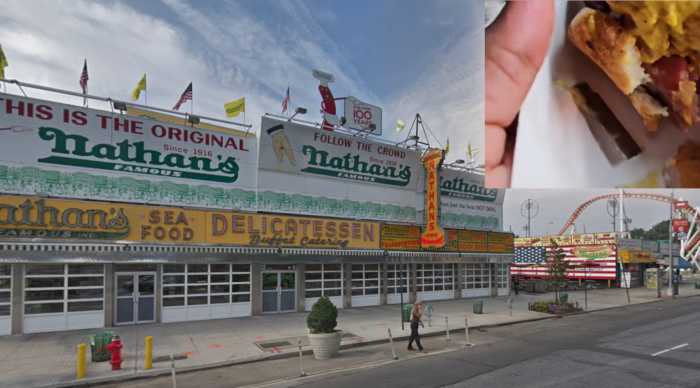Brooklyn’s new graffiti is grass.
And its principal artist is David Cohen.
“I live in one of the least-natural places I’ve ever experienced,” said Cohen, a 37-year old artist who lives above a tire shop in the gritty nether-hood some know as the South Slope and others as Sunset Park.
Being surrounded by gray infrastructure all day encouraged Cohen to create the Seed Project, an online club that requires its members to plant wheatgrass seeds all over — in plots as small as a pothole or as big as a junked Honda.
Cohen’s flowering movement of so-called “seed bombers” plants trees, flowers or grass in areas long reserved for industry.
For example, a small plot of wheatgrass now sits on a fence beneath the Williamsburg Bridge, planted in a small pot by a Seed Project member. Another lived briefly on the side of a Brooklyn-Queens Expressway underpass.
Cohen’s seed has spread to include 139 people, mostly Brooklyn-based artists, and he expects the numbers to shoot up after a major seed event next week on the Lower East Side.
Cohen recruits members on a website linked to a magazine he publishes, Artworld Digest, and by peddling seeds in artsy pockets of Fort Greene and Williamsburg.
“Sometimes I go out with a metal folding table and sign artists up,” he said, adding that the tactic failed in Soho, where he found “mostly tourists and bankers.”
He posts photographs of lush, green mini-yards on his website and, in the fall, plans to publish them in Artworld Digest.
On an academic level, he said his real and Web-based fields are a comment on the fragmentation of the natural world. In reality, they’re a comment on the dinginess of his neighborhood.
“It’s sort of like living in hell,” he said, describing the residential enclave just east of the BQE, with its rumbling underbelly of porn shops, junkyards and strip clubs.
Ironically, Cohen doesn’t seed-bomb in his own backyard, preferring to plant his tiny lawns elsewhere across the city.
This is where Cohen strays from classic seed bombers, who, like the graffiti artists of the 1980s, spill their seeds wherever then can.
“I literally just throw seeds on anything that resembles dirt and hope for the best,” said Kate Gilliam, a Bushwick bomber who began carrying wildflower seeds in her pockets soon after moving to the grimy, industrial neighborhood.
“I swear, there are 10 new people living here every day, but still no green space,” she said.
Thanks to Gilliam’s proselytizing, more than 100 people now throw seeds on dirty street corners and trash-strewn lots in the neighborhood. Gilliam’s group, Trees Not Trash, is not affiliated with Cohen’s.
While Cohen plants hard red spring wheatgrass, Gilliam plants sunflowers, sweet potato vines and Nasturtium, which grows best because the more the blossoms are picked, the more they grow.
Cohen, Gilliam and others follow a long legacy of guerrilla gardeners who have reclaimed the city’s concrete jungle with stray rosebushes and wildflowers.
But these latter-day Johnny Appleseeds must operate undercover: The Parks Department discourages random acts of seeding.
“I wouldn’t really call it illegal,” said Ashe Reardon, a Parks spokesman. “Essentially we ask the public not to plant without our prior approval.”
And botanists worry that the trend could spread damaging diseases among the city’s greenery, or import dangerous invasive species and choke out native plants.
Gilliam is concerned, but only to a point.
“Sure I worry about invasive species,” she said. “But for now, in our neighborhood, we just need to populate the dirt.”


